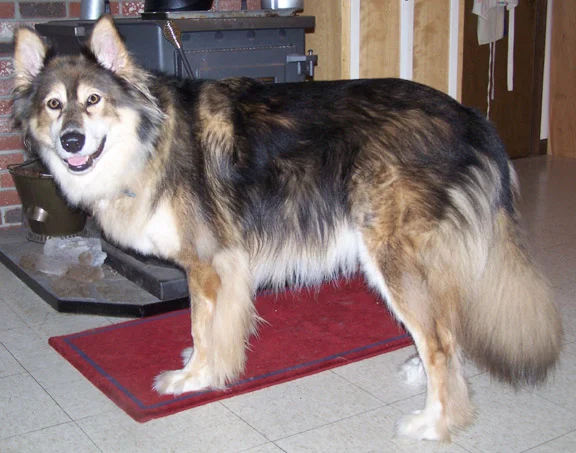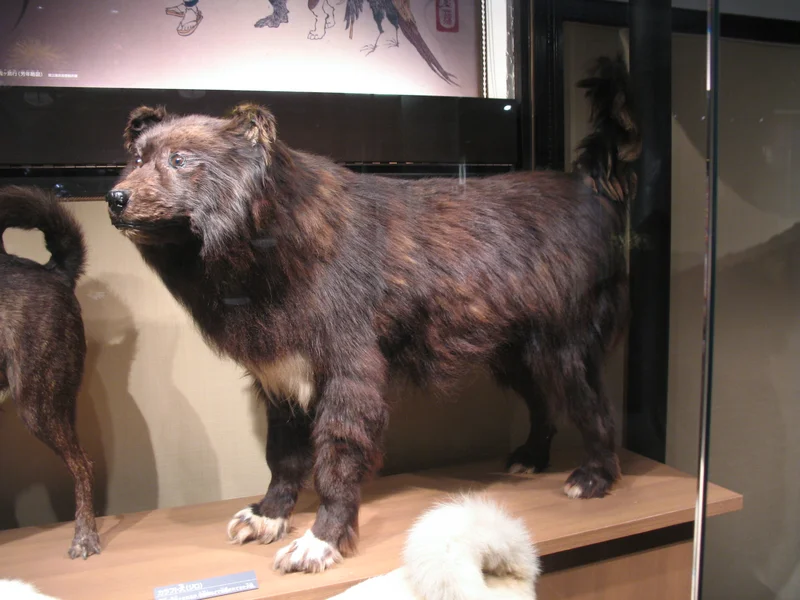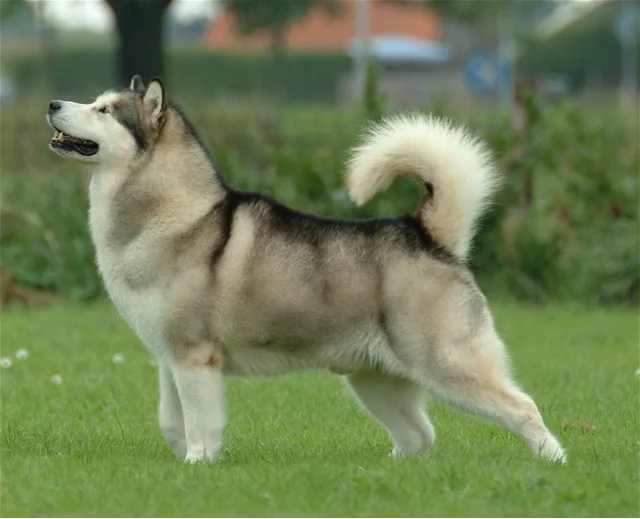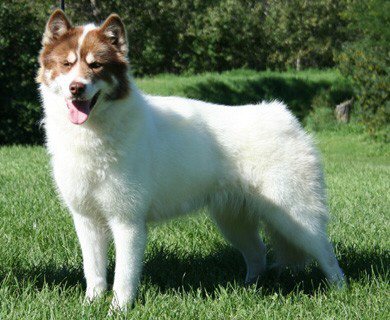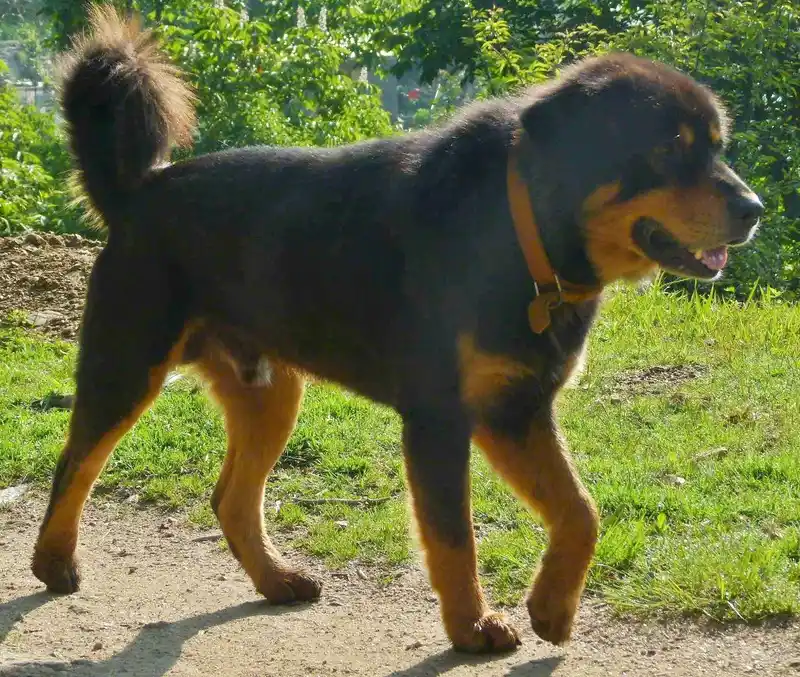Siberian Husky
The Siberian Husky is a medium-sized, energetic breed known for its striking appearance and friendly nature. Originally bred as sled dogs, they require ample exercise and thrive in active households.
Overview
🐕Breed Overview
✨Key Traits
💡What Makes Siberian Husky Special
Siberian Huskies are characterized by their striking appearance, featuring a thick double coat, erect triangular ears, and expressive almond-shaped eyes. Their friendly and gentle temperament makes them excellent companions, but they require an active lifestyle to keep them happy.
Huskies are known for their endurance and love for running, making them ideal for outdoor enthusiasts. Their strong prey drive can lead them to chase smaller animals, so supervision around other pets is necessary.
They are also known for their vocalizations, often howling to communicate rather than barking, adding to their unique charm.
The Siberian Husky is a medium-sized, energetic breed known for its striking wolf-like appearance and friendly disposition. Originating from the harsh climates of northeastern Siberia, these dogs were bred by the Chukchi people to pull sleds over long distances, showcasing their incredible endurance and resilience. With a thick double coat that protects them from extreme cold, Huskies are well-equipped for outdoor adventures.
Their playful and affectionate nature makes them excellent family pets, but they require an active lifestyle and consistent training to thrive. Huskies are known for their intelligence and independence, which can sometimes lead to stubbornness during training. They are social animals that enjoy the company of both humans and other dogs, but their strong prey drive may pose challenges around smaller pets.
Regular exercise is essential to prevent boredom and destructive behaviors, making them best suited for active owners who can provide ample outdoor time. With proper care and attention, Siberian Huskies can be loving companions for families and individuals alike.
🎉Fun Facts
Huskies have a unique vocalization style, often howling instead of barking.
Siberian Huskies can have heterochromia, meaning they can have one blue eye and one brown eye.
They are known for their incredible endurance and can run for miles without tiring.
Breed Characteristics
Family & Friends
Good Behavior
Get Up & Go
Household Harmony
Temperament & Personality
✨Key Traits
🐕Core Temperament
The Siberian Husky is known for its friendly and gentle temperament. They are outgoing and social dogs that enjoy the company of people and other dogs.
Huskies are not typically aggressive and are generally good with children, although their playful nature can sometimes lead to boisterous behavior. They are intelligent and independent, which can make training a challenge, as they may not always be eager to follow commands.
Their strong prey drive means they may chase smaller animals, so supervision is necessary. Overall, Huskies are affectionate, loyal companions that thrive in active households.
💫Personality Profile
Siberian Huskies are known for their friendly and outgoing nature. They are social dogs that thrive on companionship, whether with humans or other dogs.
Their playful demeanor makes them great family pets, as they are generally good with children. However, their independent streak can lead to stubbornness, making training a challenge.
Huskies are intelligent but may not always be eager to please, which can result in a need for consistent and patient training. They are known for their mischievous behavior and love to explore, so a secure environment is essential to prevent them from wandering off.
🔊Vocal Tendencies
Siberian Huskies are known for their vocal nature. They tend to howl rather than bark, which can be quite melodious and expressive.
Their vocalizations can vary depending on their mood; they may howl when excited, bored, or seeking attention. While they are not excessive barkers, they will vocalize to communicate with their owners or alert them to changes in their environment.
Their howling can be a charming trait for some owners, but it may not be suitable for those living in close quarters or noise-sensitive areas.
Affection & Social Traits
Energy & Activity
Communication Style
Care Requirements
🏃♂️Exercise Requirements
Daily Exercise
Siberian Huskies are an incredibly active breed that requires a significant amount of exercise to maintain their physical and mental well-being. Ideally, they need at least 1 to 2 hours of vigorous exercise each day. This can include activities such as running, hiking, or engaging in dog sports like sledding, skijoring, or agility training.
Huskies thrive on activities that allow them to run freely and explore their environment, so off-leash time in a secure area is highly beneficial. Puppies require shorter bursts of exercise, around 30 minutes to an hour, but should not be over-exercised as their joints are still developing. Adult Huskies need more intense exercise, while senior dogs may require moderate activities like leisurely walks or gentle play to keep them active without overexerting them.
Regular exercise not only helps manage their weight but also reduces behavioral issues that can arise from boredom or pent-up energy, such as digging or excessive barking.
Preferred Activities
🏠Living & Adaptability
Space Requirements
Siberian Huskies require ample space to thrive. They are not well-suited for apartment living unless the owner is committed to providing extensive daily exercise.
Ideally, they should have access to a large, securely fenced yard where they can run and play freely. Huskies are known escape artists, so a fence should be at least 6 feet high to prevent them from jumping over.
In rural settings, they can adapt well, given the space to roam and explore. Owners in smaller living situations should ensure that they can provide sufficient outdoor time and mental stimulation to prevent destructive behaviors.
Climate Preference
🍲Feeding Guide
Schedule
Food Types
Portion Size
Special Nutritional Needs
Siberian Huskies may have specific dietary needs, particularly for high-quality protein to support their active lifestyle. It's essential to choose a dog food formulated for active breeds.
Some Huskies may be prone to food sensitivities, so monitoring their reactions to different foods is crucial. Supplements such as omega fatty acids can help maintain a healthy coat and skin.
✨Grooming Requirements
Grooming Overview
The Siberian Husky has a thick double coat that requires regular grooming to keep it healthy and free of mats. During shedding seasons, which occur twice a year, daily brushing is recommended to manage loose fur.
Outside of shedding periods, brushing once or twice a week is sufficient. Use a slicker brush or an undercoat rake to effectively remove dead hair and prevent matting.
Bathing should be done as needed, typically every few months or when they become particularly dirty. Regular nail trimming, ear cleaning, and dental care are also important aspects of their grooming routine.
Care Schedule
Brush 1-2 times a week; daily during heavy shedding; bathe as needed, approximately every 1-3 months.
Health Profile
⚕️Health Care
Regular health care is vital for the longevity of Siberian Huskies. Routine veterinary check-ups, vaccinations, and preventive treatments can help detect and manage health issues early.
Maintaining a healthy weight through proper diet and exercise is crucial, as obesity can lead to various health problems. Regular dental care and grooming also contribute to their overall health and well-being.
Health Issues Overview
⏳Average Lifespan
Genetic Factors
Genetics play a significant role in the lifespan of Siberian Huskies. Certain hereditary health issues, such as eye problems and hypothyroidism, can affect their longevity.
Responsible breeding practices that prioritize genetic diversity and health testing can help reduce the risk of these conditions. Potential owners should seek reputable breeders who conduct health screenings and provide health guarantees for their puppies, ensuring a healthier genetic background.
Living Conditions
The lifespan of a Siberian Husky can be influenced by various environmental factors. Living in a climate that is too hot can lead to heat stress, which can negatively impact their health and longevity.
Regular exercise in a safe environment is crucial for maintaining their physical health, while mental stimulation can prevent behavioral issues that may arise from boredom. Social interactions with humans and other dogs are also important for their emotional well-being.
Providing a balanced diet and routine veterinary care can further enhance their lifespan and quality of life.
🏥Common Health Issues
Progressive Retinal Atrophy (PRA)
Warning Signs
🔬Diagnosis
Veterinarians typically diagnose PRA through eye examinations and genetic testing.
💊Treatment
Currently, there is no cure for PRA, but supportive care and environmental modifications can help.
📝Management Tips
Regular veterinary check-ups and monitoring for vision changes can help manage this condition. Early detection is crucial for adapting to changes in vision.
Juvenile Cataracts
Warning Signs
🔬Diagnosis
Diagnosis is made through a thorough eye examination by a veterinarian.
💊Treatment
Surgical removal of cataracts may restore vision.
📝Management Tips
Regular eye exams are essential, especially for breeding dogs. Surgical intervention may be necessary in severe cases.
Corneal Dystrophy
Warning Signs
🔬Diagnosis
Diagnosed through a veterinary eye examination.
💊Treatment
Treatment options vary; some cases may require surgical intervention.
📝Management Tips
Regular eye check-ups and monitoring for any changes in vision are important.
Hypothyroidism
Warning Signs
🔬Diagnosis
Diagnosed through blood tests measuring thyroid hormone levels.
💊Treatment
Lifelong thyroid hormone replacement therapy is typically required.
📝Management Tips
Regular monitoring and medication can help manage this condition effectively.
🛡️Preventive Care
🔬Ophthalmic Examination
Eye examinations are essential for detecting hereditary eye conditions common in Siberian Huskies, such as PRA and cataracts. Early detection can help manage these issues effectively.
📅 Annually, or more frequently if there are known issues in the lineage.
🔬Thyroid Function Test
Thyroid testing is important for detecting hypothyroidism, which can affect energy levels and overall health. Regular monitoring can help manage this condition effectively.
📅 Every 1-2 years, or as recommended by a veterinarian.
🔬Hip Evaluation
Hip evaluations are recommended to assess the risk of hip dysplasia, even though it is less common in this breed. Early detection can help manage any potential issues.
📅 At least once during the dog's life, preferably before breeding.
Training
🧠Intelligence & Trainability
💪Work Drive
Siberian Huskies have a strong work drive, stemming from their history as sled dogs. They thrive on having a job to do, whether it's pulling a sled, participating in dog sports, or engaging in interactive play.
Mental stimulation is just as important as physical exercise for this breed. Activities like agility training, obedience competitions, or even simple tasks like fetching or carrying items can keep them engaged and satisfied.
Without sufficient mental and physical challenges, Huskies may become bored and exhibit undesirable behaviors.
⚠️Training Considerations
Siberian Huskies can present several behavioral challenges due to their high energy levels and independent nature. Common issues include a tendency to escape, excessive barking, and destructive behaviors if not properly exercised or mentally stimulated.
Their strong prey drive may lead them to chase smaller animals, including cats. To mitigate these challenges, consistent training and socialization from an early age are crucial.
Positive reinforcement methods work best, as Huskies can be stubborn and may not respond well to harsh training techniques. Providing them with plenty of physical and mental activities, such as puzzle toys or interactive games, can help channel their energy positively.
📝Training Tips
Training a Siberian Husky requires patience and consistency. Start with basic obedience commands and gradually introduce more complex tasks. Short, engaging training sessions are ideal, as Huskies can lose interest quickly.
Incorporate positive reinforcement techniques, such as treats and praise, to motivate them. Socialization is also essential; expose your Husky to various environments, people, and other animals to help them develop into well-rounded adults. Enrolling in puppy kindergarten or obedience classes can provide valuable guidance for first-time owners.
Remember, a tired Husky is a well-behaved Husky, so ensure they receive ample exercise alongside training.
History & Heritage
📜Origin Story
The Siberian Husky originated from the Chukchi people of northeastern Siberia, who developed this breed to assist them in their nomadic lifestyle. These dogs were bred to withstand extreme cold and to pull sleds over long distances, making them invaluable companions in the harsh Arctic environment.
The breed's name is believed to be derived from the term 'husky,' a corruption of 'esky,' which referred to the Eskimo people and their dogs. In the early 1900s, Siberian Huskies were imported to Alaska, where they quickly gained fame for their speed and endurance in sled dog racing.
Their heroic contributions during the 1925 serum run to Nome further cemented their place in history, showcasing their incredible capabilities and loyalty to their human companions.
⏳Development History
The Siberian Husky's development can be traced back to the Chukchi people, who bred these dogs for their ability to pull sleds and assist in hunting. Over centuries, they were selectively bred for endurance, strength, and a friendly disposition.
The breed was first introduced to Alaska during the Nome Gold Rush in the early 1900s, where they quickly gained popularity as sled dogs. The 1925 serum run to Nome showcased their incredible stamina and loyalty, leading to increased recognition and admiration.
The American Kennel Club recognized the breed in 1930, and since then, they have become one of the most popular dog breeds in the United States, known for their striking appearance and friendly nature.
🛡️Purpose & Historical Role
Originally bred as sled dogs, Siberian Huskies were essential for transportation and hunting in the Arctic. Their ability to pull heavy loads over long distances made them invaluable to the Chukchi people.
In the early 20th century, they became prominent in dog racing, particularly during the Nome Gold Rush, where they excelled in competitions. The breed's most significant historical role was during the 1925 serum run to Nome, where they delivered diphtheria antitoxin to save the town from an outbreak, showcasing their endurance and loyalty.
Today, they are also cherished as family pets and participate in various dog sports.
🏺Cultural Significance
The Siberian Husky has played a vital role in the history and culture of the Chukchi people of northeastern Siberia, who relied on these dogs for transportation and companionship in harsh Arctic conditions. Their endurance and strength made them essential for pulling sleds over long distances, allowing nomadic tribes to thrive in a challenging environment.
The breed gained international fame during the 1925 serum run to Nome, where teams of Huskies delivered life-saving medicine across treacherous terrain, solidifying their status as heroic working dogs. Today, they are celebrated not only for their historical significance but also as beloved family pets and show dogs, embodying the spirit of adventure and resilience.
Conservation Status
This breed is well-established with healthy population numbers.
